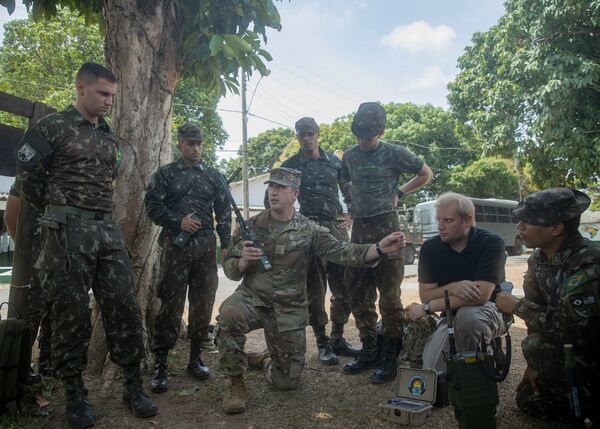
US Army Major Aaron Spence, an international technology integrator assigned to Army South, demonstrates the RIC-U to a group of Brazilian soldiers. US Army National Guard photo by Staff Sergeant Jonathan Pietrantoni. (US Army South)
The US Army wants to move its conversations with allies from sending slideshows and emails back and forth to being able to communicate via voice in the field, army officials told Janes ahead of the ‘Southern Vanguard 24' exercise in Macapá, Brazil.
The US Army is testing a new configuration of its Radio Interoperability Capability – Universal (RIC-U) during the exercise, which started on 6 November, said Major Aaron Spence, an international technology integrator assigned to Army South. The RIC-U, alongside an early prototype of translation software, will help the US and Brazil have a more complete common operating picture during the exercise, and eventually help the US communicate more easily with its non-NATO allies.
While NATO allies typically have digital assets that they can use to communicate with US systems, countries that do not have those information agreements already in place do not have those same options, Maj Spence said in a 7 November interview.
“Generally, speaking at this level, we do fine with just PowerPoint via email, so forth and so on,” he said. That's why the army started developing the RIC-U as a tactical voice bridge. The RIC-U enables radios from the Brazilian side and the US side to break through the encrypted networks that typically would only be able to connect radios on the same side.
Looking to read the full article?
Gain unlimited access to Janes news and more...







